New York City Can’t Be Foolish When It Comes to the Census
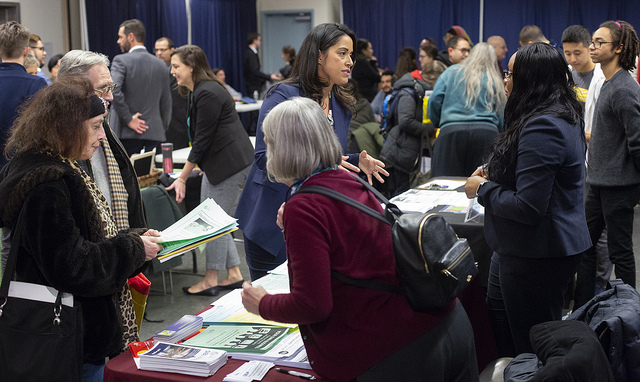
Council Member Rivera, one of the authors (photo: John McCarten/City Council)
Monday may be April Fool’s, but the one thing New Yorkers shouldn’t be joking about is the importance of the 2020 Census.
April 1 marks one year until Census Day, and in preparation, elected officials are fanning out throughout the five boroughs to talk to New Yorkers about the importance of participating in the census. You may be asking – why is there so much urgency when we still have a year to get ready to fill out this form?
The census is more than just a simple count of persons. It determines the economic and political reality of the United States and its localities, including our city.
Virtually every domestic policy decision the federal government makes in the next ten years will be conditioned by how many people it believes live and work in the country and its specific regions, states, cities, and other municipalities. And the census affects whether New York will continue to receive roughly $73 billion in federal funds for programs like SNAP, Section 8, WIC, and Medicaid, as well as how much representation New York has in Congress and the Electoral College.
If we don’t invest in a serious outreach and education effort, New York State could be at serious risk of an undercount on April 1, 2020 -- when counting begins -- and an underinvestment for New York for many years to come.
New York has struggled with census response rates going as far back as 1990. In 2010, the initial response rate for New York City was 61.9 percent, compared to 76 percent nationwide.
This is because more than half the people in the Bronx, Queens, and Brooklyn live in official “hard-to-count” neighborhoods, which is also the case for those in specific neighborhoods in Manhattan and Staten Island. These areas may be home to large populations of young children, people of color, foreign-born individuals, low-income households, limited English proficient communities, and frequent movers.
And while new changes to the census process such as improved language access and the ability to respond online will help, numerous obstacles must be overcome to reach these populations.
But as co-chairs of the New York City Council’s 2020 Task Force, we are working to re-engage these communities. We are working with each of the city’s 51 Council members to coordinate outreach with local organizations that have a proven track record in their communities.
We are also keeping up the pressure on elected officials to invest serious financial resources in outreach and education. We are disappointed that in its new budget the state only allocated up to $20 million for this critical effort, far short of the $40 million that advocates have been calling for. We need more details about how this funding will be distributed and will keep fighting to ensure that community based organizations in New York City get the funding they need to get an accurate count locally.
We need these resources because the Trump administration is doing everything in its power to ensure there is an undercount in states like New York, including fighting to place a citizenship question on the 2020 Census.
Regardless of the legal outcome of that fight, persuading foreign-born New Yorkers to participate will now require a level of outreach unseen in any previous census.
But regardless of the difficulties we face, we know we must succeed, in part because we both personally know what failure could mean for New Yorkers.
Our parents were able to provide wonderful homes for us because of the supplemental food programs that fed our families and the subsidized housing we lived in, and we were able to focus on our educations because of other financial support services that help low-income families like ours access funds for basic necessities. We probably wouldn’t have become New York City Council members without those programs, and we need to ensure that the next generation of New Yorkers who grow up in poverty have a shot at becoming a doctor, a CEO, or an elected official.
We know President Trump is eager to see us fail. But we can make him look like the fool on April 1, 2020 if every New Yorker does their part, fills out the census, and fights for the basic right for everyone to be counted.
***
City Council Members Carlos Menchaca and Carlina Rivera are co-chairs of the New York City Council’s 2020 Task Force. On Twitter @cmenchaca & @CarlinaRivera.
***
Have an op-ed idea or submission for Gotham Gazette? Email This email address is being protected from spambots. You need JavaScript enabled to view it.
New York City Needs Real Criminal Justice Reform from Albany
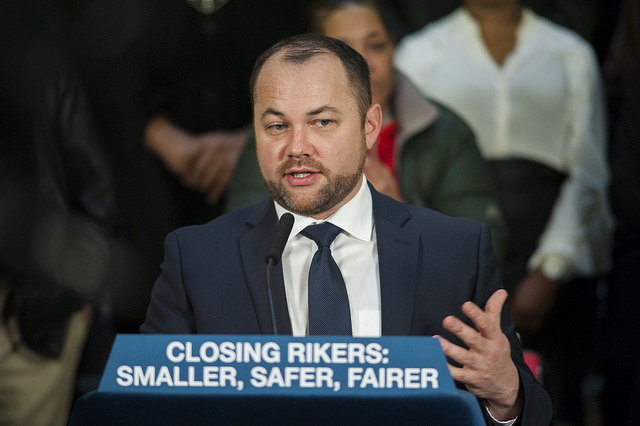
Speaker Johnson, the author (photo: Jeff Reed/City Council)
In New York, you can be locked up based on purported evidence that isn’t even disclosed to you, until a trial that can be postponed indefinitely, unless you are wealthy enough to pay your way out. That is the reality under our state’s antiquated laws governing cash bail, discovery, and speedy trial. With Democrats truly controlling both houses of the state Legislature and the governorship for the first time in decades, we now have a meaningful opportunity to modernize these regressive laws and bring justice to our criminal justice system.
We have made great strides in criminal justice reform in New York City. We have reduced arrests and eliminated prosecutions for low-level offenses that have no impact on public safety. Through bail funds, supervised release programs, and ability-to-pay assessments, we reduced our jail population from over 11,000 in early 2014 to just under 8,000 by the end of 2018. Despite these efforts, every day thousands of New Yorkers charged with a non-violent felony or a misdemeanor await trial on Rikers Island. They have not been found guilty of anything -- they simply cannot afford to pay bail. We need the state to act to end this gross injustice.
Our discovery law compounds the injustice of indefinite detention by forcing people charged with crimes to make crucial decisions about their cases without knowing what evidence the government has or doesn’t have. It allows District Attorneys to withhold even basic evidence, such as police reports, until the eve of trial, a form of institutionally-sanctioned sandbagging. Currently, defense investigators must scramble at the last minute to locate favorable witnesses or secure video evidence that could exonerate someone, but which may be long gone by the time of trial. By hamstringing the defense through New York’s blindfold law, we have turned “innocent until proven guilty” into “guilty until it is too late to prove otherwise so you just give up.”
Lawmakers in Albany have nothing to fear from discovery reform. New York is one of only four states – the others are South Carolina, Wyoming, and Louisiana – that do not allow a defendant to know anything about the witnesses against them before starting a trial. But we don’t even need to look outside our city to see how progressive discovery practices can work -- for decades the Brooklyn District Attorney's office has committed to open discovery without compromising the safety of witnesses.
Our state’s bail laws are as antiquated as our discovery laws, but our city’s programs designed to reduce the jail population have proven that we don’t need to derail people’s lives by setting cash bail in order to ensure that they return to court. Eighty-eight percent of people released on their own recognizance return to court, as compared to 91% released on bail and 92% placed into supervised release.
We cannot justify spending $250,000 per year to incarcerate someone for a 3% higher chance they come to court, especially with a cheaper alternative that produces better results. Cash bail takes people away from their families, from their jobs, and from their lives, and forces family members to choose between putting food on the table and paying exorbitant fees to a bail bond industry that profits off of their poverty.
Cash bail is nothing more than punishment for the poor. Harvey Weinstein simply paid his way to freedom, while Kalief Browder languished on Rikers for years, because of a system that, as New York Times bestselling author Bryan Stevenson wrote, “treats you better if you’re rich and guilty than if you’re poor and innocent.”
Our speedy trial laws are controlled entirely by the state. Under New York law, there is no right to a speedy trial -- there is only a right to have prosecutors state they are “ready” for trial within 90 days for a misdemeanor and six months for a felony. This framework encourages prosecutors to manipulate the system by using procedural maneuvers to postpone cases when they are not “ready” in order to minimize their speedy trial obligations.
In many instances these three nightmares coalesce: a person can’t make bail, can’t start their trial, and can’t get access to the documents that provide the basis for their prosecution and defense. We continue to do what we can in New York City to right these wrongs. But the truth is that we need the state to act right now to reform its laws and achieve real justice in our criminal justice system.
***
Corey Johnson is the Speaker of the New York City Council. On Twitter @NYCSpeakerCoJo.
***
Have an op-ed idea or submission for Gotham Gazette? Email This email address is being protected from spambots. You need JavaScript enabled to view it.
Fair Wages are Good for the Economy, Albany Should Pass an Expanded Prevailing Wage
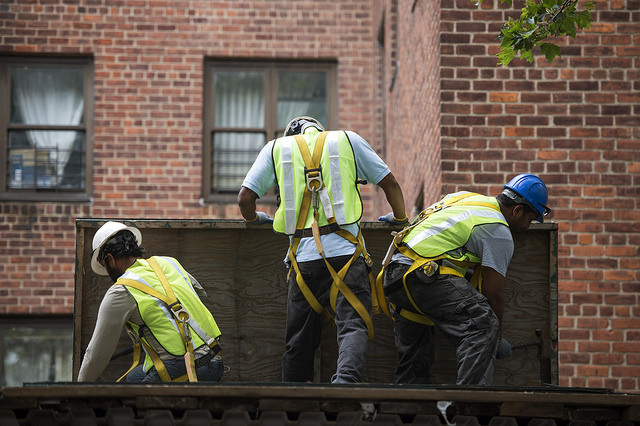
(photo: Demetrius Freeman/Mayoral Photography Office)
As the next state budget is being debated in Albany, increasing attention is being paid to the state’s prevailing wage laws. With so much misinformation out there, let’s set the record straight. Paying construction workers a middle class wage is a net positive for New York’s economy.
Specifically, the issue is how construction workers are paid for projects that receive public funds. Since 1897, projects receiving taxpayer funds are required by New York State law to pay fair wages to their workers. The problem is that developers are increasingly exploiting loopholes created by the growth of public-private projects, which blur the lines of what’s considered “public work.”
One recent example is the Chelsea assisted living facility on Long Island. The project received $15 million in public funding, but because that money came through the Brookhaven Industrial Development Agency (IDA), there was no requirement to pay workers a middle-class wage.
Legislation currently making its way through the legislature would close that loophole. The bill,
S1947(Ramos)/A1261(Bronson), would clearly define “public work” as any large-scale project that is paid for with public funds. By ensuring that projects subsidized with public funds support middle class wages, the law will strengthen the middle class and the state’s economy.
Chances are that you’ve seen folks in the business community argue the opposing viewpoint – but when you look under the surface, those arguments tend to rely on overly simplistic or just plain inaccurate information.
Take the industry-backed argument that paying workers a middle-class wage would force costs to skyrocket and immediately put an end to all development. When a wealthy developer complains that much about paying a fair wage, you have to wonder how little they’re actually paying their workers.
As an academic, I rely on data and evidence to form a judgment. The data show that labor costs for construction projects usually amount to about 23-24 percent of the total project cost. To keep the math simple, let’s say that a prevailing wage law results in a 10 percent raise for construction workers in a given region. At most, that would increase total cost by 2.5 percent. A 2.5 percent cost can be easily offset by the efficiencies gained from paying the highly-trained workers you attract with a prevailing wage. Trained, skilled workers mean higher productivity along with fewer accidents, errors and change orders.
Of course, that’s only looking at the prevailing wage from the point of view of big developers. If we look at the prevailing wage as regular New Yorker taxpayers, the benefits multiply.
The overwhelming body of research shows a strong positive connection between prevailing wages and economic development. Prevailing wage laws increase consumer demand, helping to build a strong middle-class community. That helps more than just those families. For every dollar spent on a prevailing wage project, $1.50 is generated for the local economy. In addition, when workers are paid a fair wage, they pay more in taxes and are less dependent on government assistance.
In a state like New York, prevailing wage laws also protect local workers. When developers are forced to pay middle class wages, they hire skilled, local workers instead of trucking in cheap labor from outside the area.
Next time you hear developers make outlandish claims about the devastating impact of a prevailing wage, remember that the only impact they care about is to their own personal bottom line. By not paying fair wages, they’re forcing the rest of us to carry the burden of the inevitable consequences of lower pay and working class poverty. In economics we call this a “market failure” as builders shift costs to taxpayers to keep their wages low and profits high. As taxpayers, we’re the ones left holding the bag.
***
Kevin Duncan is a professor of economics at Colorado State University-Pueblo and has been a visiting scholar at the Institute for Research on Labor and Employment at the University of California, Berkeley.
***
Have an op-ed idea or submission for Gotham Gazette? Email This email address is being protected from spambots. You need JavaScript enabled to view it.
When Government Does Support Survivors’ Healing
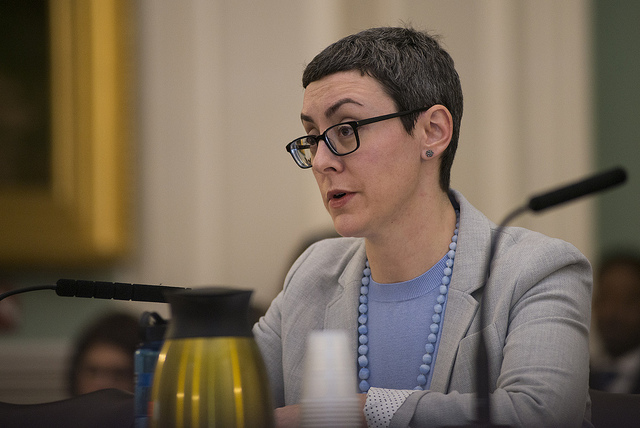
(photo: Jeff Reed/City Council)
The New York City Council on Thursday voted unanimously (47-0) to approve a local law to amend the city’s administrative code allowing for the redaction of physicians’ names from birth certificates when their medical license has been surrendered or revoked by the state’s Office of Professional Medical Conduct. To some, this may seem like administrative minutia. To me, this is the culmination of years of work and an acknowledgement of the trauma from being sexually assaulted by my OB/GYN. Now, my daughters won’t have to keep the name of the serial sexual criminal who delivered them and also abused me on the document that marks their entrance into this world.
As our culture strives to become more supportive of survivors of sexual assault, we need to identify more ways to offer tangible relief. We encourage victims to speak up but when they do, they are often met with a justice system that doesn’t offer much relief (or justice). In addition to mustering the courage to come forward, we must overcome mountains of disbelief, inertia, and prosecutorial discretion.
This New York City bill is a tangible example of a legislator listening directly to victims’ needs and using government power to support survivors. I am enormously grateful to Council Member Mark Levine, who, in his capacity as chair of the Council’s Committee on Health, intervened on behalf of me and countless other women abused by this one physician to offer relief with an equitable solution not requiring a court order (as the city’s Department of Health and Mental Hygiene initially requested). His support is an acknowledgement of our trauma and pain, something the city has so far failed to do.
Robert Hadden continued seeing patients at Columbia University and New York-Presbyterian Hospital facilities even after the police and the Manhattan District Attorney were notified of the allegations against him in June 2012. There are dozens of known victims who’ve come forward, and probably hundreds or even thousands of others. Hadden’s own defense attorney said during the criminal trial that he’d had over 30,000 patient visits. Almost all of the victims I’m aware of were pregnant when we were assaulted.
For 10 of us, Hadden delivered our children. That’s 13 babies who carry his name on their birth certificates. I sit up at night thinking about how many more children he delivered during his career. He used that privilege to gain access to women’s bodies for his own sexual gratification.
For me, the worst part of all of this is that Hadden was the first person in the entire world to touch my children. His hands physically took them out of me during my c-section. Those are the same hands that abused me and it’s something I can never change. What I did set out to change was the official documentation of Hadden’s involvement with that birth. Now, with the City Council having passed this legislation, I and others expect Mayor Bill de Blasio to sign it into law.
Sexual assault leaves both a physical and emotional residue. Survivors of assault by medical professionals will now be able to remove some of the physical remainder from their lives. My experience is a reminder for other advocates that a bureaucracy’s inability to adapt is only limited by those within it. Council Member Levine, Speaker Corey Johnson and their colleagues stepped forward to support survivors with this reasonable solution. Their vote reveals an ability to overcome a subservience to the way things are typically done. I hope that other survivors won’t stop asking for what they need from our electeds. I know I won’t.
***
Marissa Hoechstetter is an activist. On Twitter @MHoechstetter.
***
Have an op-ed idea or submission for Gotham Gazette? Email This email address is being protected from spambots. You need JavaScript enabled to view it.
A New Deal for CUNY This State Budget: Close the TAP Gap and Freeze Tuition
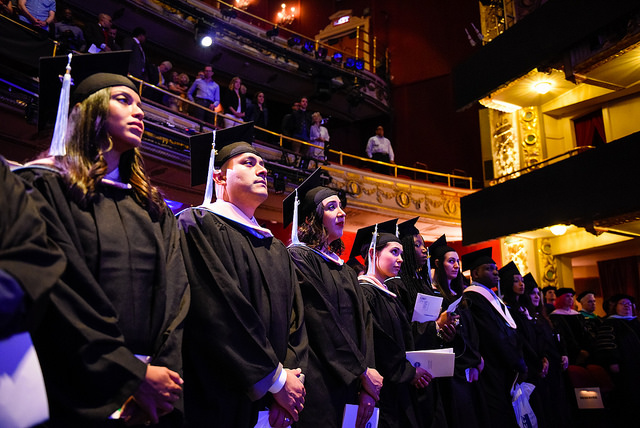
(photo: Edwin J. Torres/Mayoral Photography Office)
While the national admissions bribery scandal rocks the country, another, less sensational, legal -- but still incredibly important -- higher education crisis is unfolding before our eyes in New York. The City University of New York (CUNY), where the majority of the student body comes from underserved communities of color, is in the midst of a financial crisis, putting public higher education at risk for thousands of New Yorkers who want and deserve opportunity.
In 2017 the New York Times reported that CUNY propels “almost six times as many low-income students into the middle class and beyond as all eight Ivy League campuses, plus Duke, M.I.T., Stanford and Chicago, combined.” Despite its success in doing so, CUNY deals with consistent flat funding and underfunding from state government in Albany, and “predictable” and “rational” tuition hikes have increasingly placed the burden of keeping the University afloat on the backs of students. Tuition hikes are only a band-aid fix to an underlying problem of state divestment in public higher education.
To solve this crisis, the state must prioritize and increase funding towards higher education, starting with the new state budget that is due by Monday, April 1.
CUNY accepts all and recognizes the potential of all, which makes it the right investment. Investing in CUNY means ensuring all New Yorkers, regardless of income or status, can pursue an excellent and affordable education.
My story is the story of many CUNY students. I attended Queensborough Community College with the financial and academic support provided by CUNY’s ASAP program. The opportunity program, like SEEK and ACE, recognizes that access to resources like Metrocards, textbook vouchers, and dedicated advisors can make a world of difference to financially-struggling students. As a new immigrant to the United States, these resources helped provide stability for me and my family.
Mid-way through my college career, we lost my father, the family breadwinner, to cancer. My family relocated to Texas; I was able to stay in New York and continue my education at City College thanks to merit-based scholarships I won given my performance in community college as a straight-A student, propelled by the resources ASAP provided. However, these very same resources that helped me succeed in college are the frequent targets of budget cuts, and others are severely underfunded. For example, at City College, I was only allowed six sessions with a mental health counselor because of budgetary limitations, despite needing more help with navigating the sudden changes in my life.
At the Board of Trustees Public Hearing in January on the fiscal year 2020 budget request, student leaders pointed out that the messaging in Albany around CUNY is inconsistent. How can we herald programs to make college more affordable or provide food pantries, but still choose to burden these same students with a tuition hike of $200 each year, which is more than “modest” for CUNY families?
Predictability of a tuition hike doesn’t change its unaffordability. Another tuition hike also goes against the vision of Governor Cuomo and the tuition-free promise he made to New Yorkers two years ago with the Excelsior Scholarship, which only helps a little over 2 percent of CUNY students. Furthermore, an increase in tuition -- which could and should be rolled back by state lawmakers -- will further widen “the TAP Gap,” the growing difference between the state’s tuition assistance program funding for students and actual tuition costs. As of now the maximum amount of TAP that can be awarded to a student each year is $5,165, while the annual cost of attendance at a four-year college is $6,730, leaving a yearly gap of $1,565 that colleges need to fund by slashing existing programs and services.
The looming financial crisis faced by many of CUNY’s close to 500,000 students is an equity issue, one that disproportionately affects colleges where students of color and those from low-income families are the majority population. For a university once called the “free academy” and the “poor man’s Harvard,” this is disheartening.
Many state legislators were beneficiaries of CUNY’s opportunity programs and support services -- some even went to CUNY for free -- and should recognize the value of investing in higher education. Shifting the burden of funding from the public to students is a betrayal of New York’s commitment to college affordability and we in the CUNY Student Senate call on leadership to take the necessary measures to end disinvestment in public higher education and protect that commitment instead.
The Legislature and Governor Cuomo must provide $32 million to reinstate a tuition freeze across all public colleges like they did in 2016, provide the $74 million needed to fill the TAP Gap, and commit funds to expand opportunity programs and support services, not just simply restoring proposed cuts.
On Sunday, over 100 students marched from City Hall, across Brooklyn Bridge, to Brooklyn Borough Hall, with Borough Presidents Gale Brewer and Eric Adams, Public Advocate Jumaane Williams, and State Senator Robert Jackson joining in solidarity, for a new deal for CUNY. The needs of CUNY students are not mutually exclusive to the needs of New Yorkers, and rather than short-changing higher education, Albany leaders should support the university, whose mission is synonymous with the state’s mission of providing all New York families a pathway to a better life.
***
Haris Khan is the chairperson for the CUNY University Student Senate (USS) and the only student member of the CUNY Board of Trustees. He also sits on the NYS Higher Education Services Corporation Board of Trustees and studies Politics, Diplomacy, and Law in the CUNY BA program at The City College of New York. On Twitter @hariskhan97.
***
Have an op-ed idea or submission for Gotham Gazette? Email This email address is being protected from spambots. You need JavaScript enabled to view it.
Rep. Serrano’s Retirement and a Looming Rumble in the Bronx
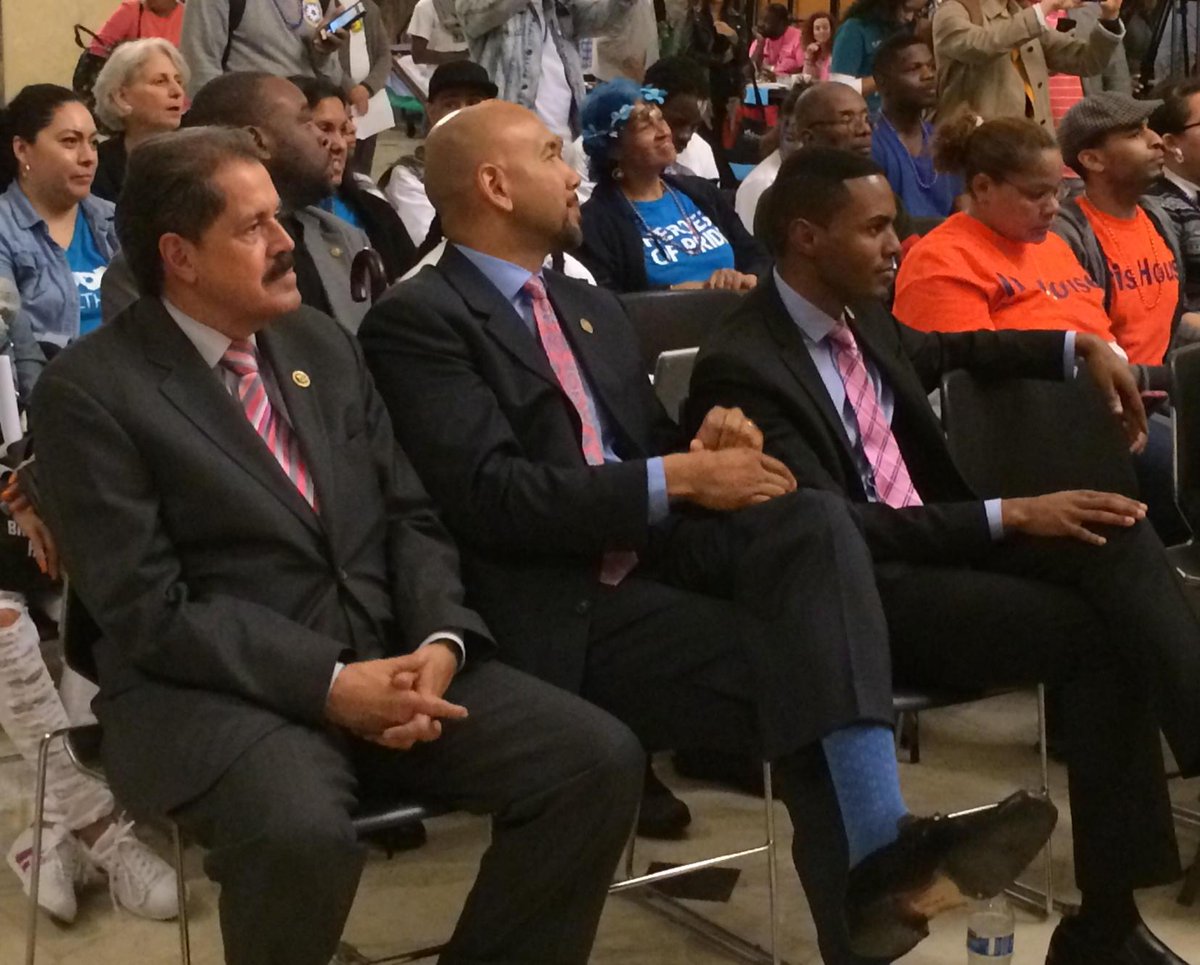
Rep. Serrano, BP Diaz Jr., CM Torres (l-r) (photo: @rubendiazjr)
It’s time for a rumble in the Bronx. After 29 years in Congress and 44 years in elected office, Congressional Rep. José Serrano has decided to retire from office. Together with the likes of Herman Badillo, José Rivera, Robert Garcia, Gerena Valentin, and Ramon Velez in the Bronx, Serrano has been a pioneering figure within the Latino/Puerto Rican political landscape in New York City.
Serrano fought at the frontlines for Latino political representation at a time when Puerto Ricans were left out of the political equation despite their burgeoning numbers. Serrano, and the rest, fought arduously for this long-sought-after recognition. Their hard work paid off. Serrano won an Assembly seat in 1975.
While Serrano’s early work to gain Latino political representation is not debatable, the rest of his legacy is more dubious. Serrano has not been known for any sort of legislative prowess. The South Bronx, which he represents, has long been a poverty stricken area that has seen scant federal resources for decades, despite Serrano’s long tenure in Congress.
As a result of this record, observers like long-time political operative Mike Nieves had surmised that a formidable and credible candidate could defeat Serrano. No one ever did.
Serrano’s legacy notwithstanding, the eyes of our political world will now turn to the 15th Congressional district in the Bronx to see who will succeed him in Congress.
The timing of Serrano’s retirement announcement coincides with City Council Member Ritchie Torres’ own recent announcement that he would challenge the incumbent representative for the seat. In a previous column, I mentioned that Torres would be one to watch as we eye the future of Latino politics in the city. His intellectual abilities, grasp of public policy, and ability to articulate his view have deservedly caught people’s attention.
Torres is clearly a formidable candidate for the “open” congressional seat. Most of his Council district, which he first won in 2013, lies within Serrano’s Congressional district. After six years in the Council, Torres has been able to gain some recognition among voters for his work on behalf of his constituents, particularly in areas affecting NYCHA residents.
Various other names are being floated at this nascent stage. Among them are former City Council Speaker Melissa Mark-Viverito. Mark-Viverito has just come off a dismal showing in her race for the citywide position of public advocate. Yet she still holds some name recognition, particularly among Latinos.
Her home congressional district is currently represented by Adriano Espaillat but since there are no in-district residency requirements for a congressional seat, she could still make a play for the Serrano seat.
Then there is Assemblymember Marcos Crespo, who is also the Bronx Democratic leader. Crespo’s Assembly district lies entirely within Serrano’s Congressional district and he would therefore potentially go into a race of this sort with a natural base of followers. Some will question his alliance with Council Member Ruben Diaz, Sr., who has been challenged for repeated homophobic statements and positions. But given Crespo’s potential to capitalize on some of the resources that would naturally come his way by virtue of his party position, he would quickly be considered a leading candidate for the position.
Yet another recent public advocate candidate might also throw his hat in the ring. Since Michael Blake’s election to the Assembly, and then his appointment to be a vice chair of the Democratic National Committee, rumors have swirled that he would one day challenge José Serrano.
That day never came. But this opening can provide an opportunity for Blake. Despite losing the public advocate race, Blake won his home borough of the Bronx and did fairly well in the portion covering Serrano’s Congressional district.
And if he’s the only African-American in the race, that could also create a path to victory for Blake. With multiple formidable Latino candidates, a strong African-American candidate could win the seat.
Almost a third of the Democratic electorate in this Congressional district is African-American. Over 55 percent is Latino. If the race takes an ethnic path, that could lead to a split Latino vote and a more consolidated African American vote.
Then there’s state Senator Gustavo Rivera. Rivera, first elected in 2010, represents a swath of Serrano’s district in the state Senate. He has earned admiration from many progressives for standing up to the Bronx political machinery and for policies that progressives have long championed.
Lastly, if he were to step up, one elected official who could clear many if not all in the field would be Bronx Borough President Ruben Diaz, Jr. Diaz, Jr. is known throughout the borough and remains popular among many voters. Furthermore, this district has always been his home district -- he represented parts of it in the Assembly for 13 years.
Diaz Jr.’s capable communications guru, John DeSio, has tweeted that the borough president is not interested in the position. The borough president appears focused on launching a mayoral bid. But politics is practical and a congressional run could be an easier path to victory than a citywide mayoral race.
All this is conjecture, of course. What’s certain is that we can expect a free-for-all for the position ahead of the 2020 vote, and thus another rumble in the Bronx.
***
Eli Valentin teaches political science at Monroe College and is a frequent guest political analyst on Univision NY. On Twitter @EliValentinNY.
***
Have an op-ed idea or submission for Gotham Gazette? Email This email address is being protected from spambots. You need JavaScript enabled to view it.
Mayoral Control of City Schools Helps Students Succeed in a Global Economy - It Must Be Extended
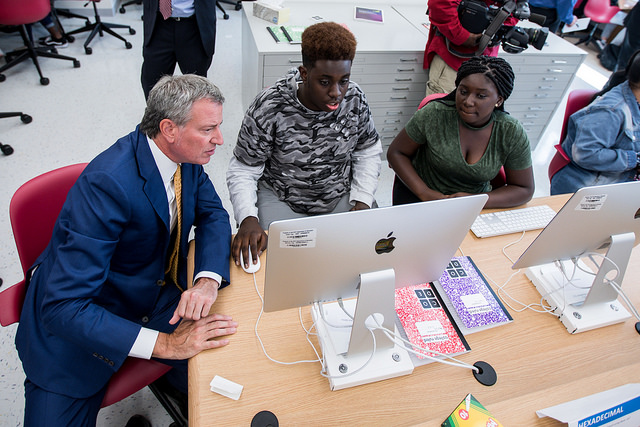
(photo: Benjamin Kanter/Mayoral Photo Office)
In 2007, I was honored to chair the Commission on School Governance, a body appointed by then Public Advocate Betsy Gotbaum to make recommendations on the future of New York City’s mayoral control law, which was about to come up for renewal.
I brought a unique perspective to the deliberations. I had served two terms as president of the New York City Board of Education during the 1970s, and had fought hard to preserve the board’s role in hiring and monitoring the performance of NYC school chancellors—as well as the independence of the board from direct political takeover.
Why? Because I believed the system worked.
As in any large, urban school system, there were some bad apples, but most of the central and community school board members impressed me as dedicated, hard-working people who wanted to make a difference in the lives of children.
Two decades later, I had what I like to call “an epiphany of mayoral control.”
When it came time to made recommendations about the future of the legislation in 2008, I enthusiastically added my signature to the commission’s findings. Our overarching conclusion: “Mayoral control of the schools should be maintained so that the mayor can remain the principal public official who charts the direction of the school system and through the Chancellor is ultimately responsible for operating the schools on a day-to-day basis.”
I am more convinced than ever that a three-year renewal of mayoral accountability is the best thing we can do to move all our students to excellence and the futures they deserve.
Instead of dispersed authority and a rigid bureaucracy, we now have clear lines of accountability and responsibility. This has enabled mayors to allocate unprecedented resources to the city’s public schools and has empowered more parents to become involved in their children’s education.
Since its inception, mayoral accountability has enjoyed the robust support of business leaders like myself, for good reason. As a senior advisor to a global public relations and communications agency, I know that an educated population is essential for any company to compete in the 21st-century. An education that gives all students access to the most in-demand skills will also go a long way toward bringing equity to the workforce. Business leaders have a real interest in shrinking racial and gender gaps in fields such as computer science, where jobs are growing at twice the national average.
The Department of Education’s (DOE) Computer Science for All (CS4All) initiative is an example of mayoral accountability at its best. This $81 million public-private partnership will enable all city public school students, with an emphasis on female, black, and Hispanic students, to learn computer science by 2025. Mayor Bill de Blasio and Schools Chancellor Richard Carranza are laser-focused on empowering more young women and students of color to pursue careers in computer science, where they are currently under-represented.
Now, New York City is leading the nation in ensuring more young women and students of color have access to, and are excelling in, advanced computer science classes. In the past two years, the DOE has seen a nearly six-fold increase in the number of girls taking an Advanced Placement (AP) Computer Science test—up from 379 in 2016 to 2,155 last year. I was especially impressed to learn that girls represented 42 percent of these test-takers, versus 28 percent nationwide. An increasing number of girls are also passing an AP computer-science exam: 1,266 in 2018, up from 177 in 2016. The number of black and Hispanic students taking an AP Computer Science exam has also increased by 55 percent and 46 percent, respectively, since 2017.
CS4All and the city’s other Equity and Excellence for All initiatives would have been difficult, if not impossible, to achieve when I served on the Board of Education. Mayoral control has created and fostered major policies at a much faster pace than we ever saw previously—while keeping responsibility and accountability focused where it belongs: with the Mayor.
I believe New York State legislators understand the benefits of having a mayor at the helm of our school system. They should include a three-year extension of mayoral control in the budget due by Monday, April 1.
It is time to make our collective epiphany a reality.
***
Stephen R. Aiello is a senior advisor at Hill+Knowlton Strategies in New York City, and served as president of the NYC Board of Education between 1977 and 1979.
***
Have an op-ed idea or submission for Gotham Gazette? Email This email address is being protected from spambots. You need JavaScript enabled to view it.
For Real Democracy, Demand Small Donor Matching for New York State Elections
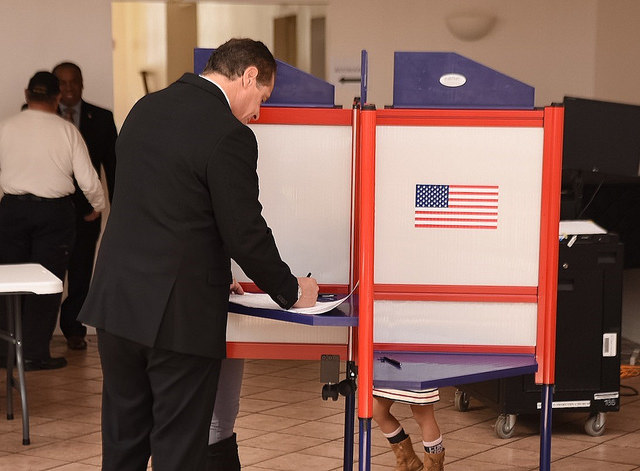
(photo: governor's office)
Eighty percent of New Yorkers voted to fortify the way campaigns are financed in New York City through question 1 on the November 2018 ballot. Limiting big money in our local elections clearly resonated with voters, who agreed to increase the public matching dollar amount in the city and reduce individual contribution limits.
And for good reason! Big donations from real estate companies, healthcare corporations and Wall Street can quickly add up and drown out the power from everyday voters on decisions that we care about most like rent stabilization, public school funding, and affordable healthcare.
Today, government leaders in Albany are deciding whether to institute and fund a public matching system at the state level. It’s timely and necessary. The Senate has blocked the reform for years. Now the state Legislature finally has the opportunity to enact real change, but politicians are backtracking. We have just a few days to convince them -- a new budget is due by April 1.
Our system is skewed toward big donors and special interests. According to the Brennan Center for Justice, in New York state elections in 2018, “the top 100 donors gave more to candidates than all of the estimated 137,000 small donors combined.” That’s a tiny, very wealthy fraction of the voting public that isn’t representative of you or me gaining too much influence.
As it has in New York City, small donor matching would enable candidates for state elections to opt into a program that puts limits on large donations but matches small ones. The policy on the table for the state would see the first $175 of each individual’s donations matched at a 6-to-1 rate. With small donor matching, your $10 contribution becomes $70. This reform puts everyday people on the same playing field as the big donors and ensures that our voices are heard over corporations and special interests.
After years of that system, New York City voters just approved increases to $250 and 8-to-1 while lowering the contribution limits.
We’ve had small donor matching in New York City for 30 years, and the population funding city campaigns looks more like the city itself than the group contributing to the legislators who represent the city in Albany. Per the Brennan Center’s analysis, “almost 90 percent of the city’s census block groups were home to someone — and often, many people — who gave $175 or less to a City Council candidate in 2009. By contrast, the small donors in the 2010 State Assembly elections came from only 30 percent of the city’s census block groups.”
And candidates who are elected in this manner may be more likely to create and pass legislation that is representative of their small-donor constituents. For example, after Connecticut passed its Citizens’ Election Program, legislators from the new cohort of small-donor-supported candidates passed a paid sick leave law that had been blocked by special interests for years.
If you believe that corporations and special interest groups shouldn’t be allowed to buy elections, tell your Assembly Member and State Senator that you want small donor matching included in this year’s budget. And do it now!
***
Teri Hagedorn is a volunteer for the New York chapter of Represent Us.
***
Have an op-ed idea or submission for Gotham Gazette? Email This email address is being protected from spambots. You need JavaScript enabled to view it.
How to Earn Support for Marijuana Legalization from New York Legislators of Color
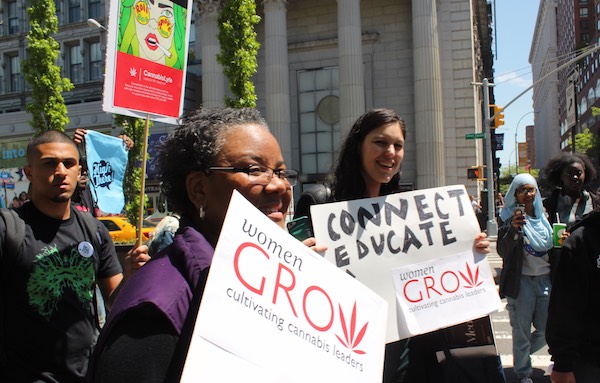
(photo: Jake Plowden)
The cannabis industry has expanded dramatically in recent years. The state of California led the way on the legalization of medical marijuana with the first dispensaries opening there more than 20 years ago. Colorado legalized recreational marijuana in 2014, and has since been joined by nearly a dozen other states and the District of Columbia.
Yet in the midst of this cannabis market boom, communities of color have too often been left watching from the sidelines, excluded from the opportunity to create jobs and build wealth in their own neighborhoods. In these same neighborhoods, many black and Latino individuals are paying the price for the misguided War on Drugs, marked by criminal convictions for acts that are now perfectly legal in many states.
As legislators in New York, New Jersey, and other states debate the legalization of marijuana and other cannabis products, we must urge them to adopt policies that rectify the harmful impact of the War on Drugs and allow all aspiring entrepreneurs to participate in this growing and potentially lucrative market.
In the next five years, experts predict the global market in legal marijuana will approach nearly $150 billion in sales. We simply cannot afford to leave that kind of money on the table.
There are several key policies that we believe will bring equity to the cannabis market:
First, we need to start with the immediate and automatic expungement of criminal convictions related to the use, consumption, or sale of marijuana and other cannabis products.
Second, when legislators develop cannabis policies they should prioritize the licensing of individuals with prior criminal convictions related to marijuana to open cannabis businesses.
Third, we need empowerment zones, in neighborhoods that were disproportionately targeted by the War on Drugs, with policies in place on day one to encourage community members to open and expand cannabis businesses.
Fourth, states should mandate that the agencies regulating cannabis continually monitor the demographics of cannabis businesses, and issue regular reports on whether the industry accurately reflects the population as a whole.
We know from experience what happened in Colorado, where fewer than one in five marijuana dispensaries are owned by people of color. Similar figures have been reported in other states that have legalized marijuana.
We understand the structural barriers that now exist. Centuries of federal, state, and local policies continue to undermine wealth formation in our communities. In addition, stereotypes persist in the cannabis industry, privileging the experience of white, male entrepreneurs and too often ignoring the reality that all kinds of people have something to offer as this market expands and enters the mainstream.
We believe that remedial policies that actively and forcefully address existing disparities have the potential to overcome the structural barriers and allow communities of color to assume the position of leadership in this exciting new industry. Those policies will be enacted (or not) in Albany, Trenton, and a dozen other state capitals in the next few years, as well as in Congress. We need to make our voices heard.
***
Steven Phan is a first generation Asian-American and co-founder of the CBD retail store Come Back Daily, with two locations in Manhattan.
***
Have an op-ed idea or submission for Gotham Gazette? Email This email address is being protected from spambots. You need JavaScript enabled to view it.
The Answer to More Diversity at Specialized High Schools is Tutoring Programs Like Ours
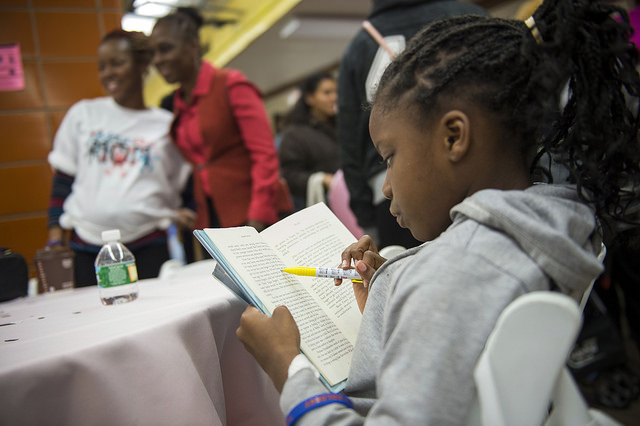
(photo: Ed Reed/Mayor's Office)
Last week, 27,000 eighth-graders and their parents opened exam results, hoping they had won a coveted seat at one of New York City’s eight specialized high schools. Unsurprisingly, this year’s offers followed trends of past years, with only 10.5 percent of offers going to black and Hispanic students, who comprise 68 percent of the overall public school system. At Stuyvesant High School, a mere seven black students and 33 Hispanic students were offered one of the 895 seats.
These disparities have long prompted debate about how to create more racial and ethnic equity in the specialized high schools while maintaining their quality. Although the test is open to all, few students in lower-income areas are able to afford test preparation, or even know about the exam. Those who do sit for it often can’t compete due to subpar educations in their poor neighborhoods.
Mayor de Blasio wants to abandon the test in favor of holistic assessments based on student grades, test scores, and class rankings. Over the course of a three-year phase-out of the test, his plan would have the number of students admitted based on class rank increase incrementally until 90 percent of offers go to the top 7 percent of students at each middle school. The remaining 10 percent of seats would be subject to a lottery open only to those with a minimum grade average of 93 percent. During the transition period, the Discovery Program, which offers admittance to low-income students who just missed the cutoff score on completion of a summer enrichment program, would expand to 20 percent of all seats.
Although diversity should be paramount to admissions, I fear that Mayor de Blasio’s proposal trades systems of exclusivity. In order to evaluate students based strictly on their scores, the test doesn’t compensate for inequities in early education. By contrast, assessments based on class rankings ignore the merit of individuals below the 7 percent line to overcompensate for inequities. Without the test, however, the student bodies of specialized high schools may be no different than others because the plan places unequal middle schools on an equal playing field.
Moreover, students’ abilities set the pace in classrooms and determine the quality of discussions. An undistinguished student body removes the challenges meant to be integral to a specialized high school education.
Rather than reform the system to the advantage of all New Yorkers, Mayor de Blasio proposes to lower the bar. The substandard education that students of color often receive will remain in place in elementary and middle schools. Programs designed to prepare students for the entrance exam will disappear, and with them the enrichment opportunities offered to students regardless of the results.
The diversity problem I’ve witnessed firsthand at the High School of American Studies at Lehman College, a specialized high school in the Bronx where I’m a junior, persists. Some of my classmates are first-generation immigrants who overcame the disadvantage of a non-English speaking or low-income household to gain a seat. They’re the exception. In fact, they’re often among a handful of students at their middle school to be admitted to a specialized high school. In contrast, the graduating class of my Upper West Side middle school received 150 offers from specialized high schools. I had a scholarship to a tutoring program for the test, but this isn’t an option for most students of color.
Recognizing this lack of resources, a new student-run tutoring program was created at my high school to prepare local Bronx middle school students for the SHSAT. A team of upperclassmen create and teach English and math lessons twice weekly to a class of seventh-graders. We plan activities, explain the high school process to ensure that the middle school students see admittance to our school as attainable, and provide snacks.
But teenagers can only tutor 30 kids at a time when thousands more deserve enrichment opportunities. All specialized high schools and other schools should host tutoring programs. These programs can and should reach more students and at a younger age, so that fairness and diversity are ensured long before incoming students walk through the door.
***
Jade Lozada is a junior at the High School of American Studies at Lehman College and a second-generation Hispanic American. Through a student-run tutoring program, she teaches local Bronx middle-schoolers English Language Arts in preparation for the SHSAT exam.
***
Have an op-ed idea or submission for Gotham Gazette? Email This email address is being protected from spambots. You need JavaScript enabled to view it.
Crafting a State Budget to Enhance Nurse-Family Partnership and Support Vulnerable New York Families
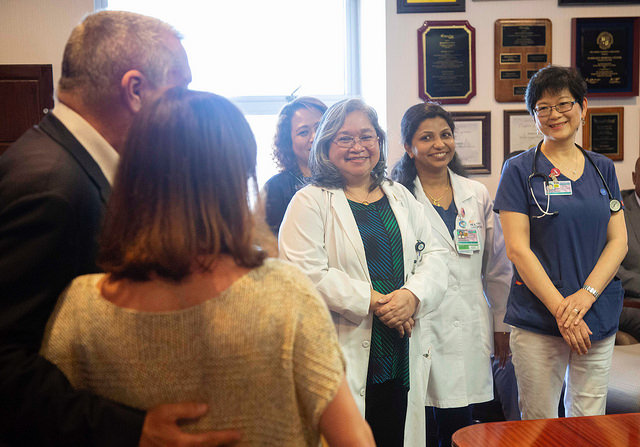
(photo: John McCarten/NY City Council)
We live in a state with enormous resources, and a $175 billion annual budget—yet many New Yorkers still lack access to adequate maternal care. New York's maternal mortality rate is higher than the national average, and even worse in communities of color. Black women are over three times more likely to die from complications during childbirth than their white counterparts.
All too often, the outcome of a woman's pregnancy has less to do with her health than with the quality of care she receives over the course of those nine months. For many women across our state, poverty and a lack of resources can be the decisive factor in determining the outcome of a pregnancy. That's unacceptable. We need better services and a standardized level of care to ensure that all women, regardless of their income level, race, or geography, can experience a safe and healthy delivery.
It’s time for New York to get serious about these issues, and address these startling trends. That’s why I pushed for the New York State Senate to increase funding in our chamber’s state budget plan for maternal health care – and why I’m now calling for that funding to remain in the final budget, to be agreed on by the Governor and the Legislature by April 1.
With expanded funding, we can better support the essential work being done through New York’s Nurse-Family Partnership programs. These programs, located throughout New York City and the state, connect the most high-risk first-time mothers in poverty with their own personal registered nurse through pregnancy and the baby’s first 1,000 days.
These nurses provide more than home visits to assess mom’s health and baby’s development; they offer social support and guidance on many critical facets of a woman’s life. They connect new moms with services to help find stable employment and housing, resources to make ends meet, like local food banks, and healthcare services during pregnancy and beyond. Their visits set the stage for a lifetime of healthy development. In fact, the program has seen significant improvement in pregnancy outcomes, including a reduction in preterm births and healthier pregnancies in New York state.
As the proud parent of two young daughters, I know how important it is that we support families through pregnancy and early childhood. And as a policymaker, I believe that New York has a responsibility to ensure that every family has access to the care they need.
Furthermore, every dollar invested in Nurse-Family Partnership yields $5.70 in return to government. Additional funds will guarantee the program can operate at its current level and potentially reach more vulnerable New Yorkers—something all of my colleagues should support. Investing in future generations isn't just the moral thing to do, it’s smart public policy.
***
State Senator Brad Hoylman represents parts of Manhattan. On Twitter @bradhoylman.
***
Have an op-ed idea or submission for Gotham Gazette? Email This email address is being protected from spambots. You need JavaScript enabled to view it.